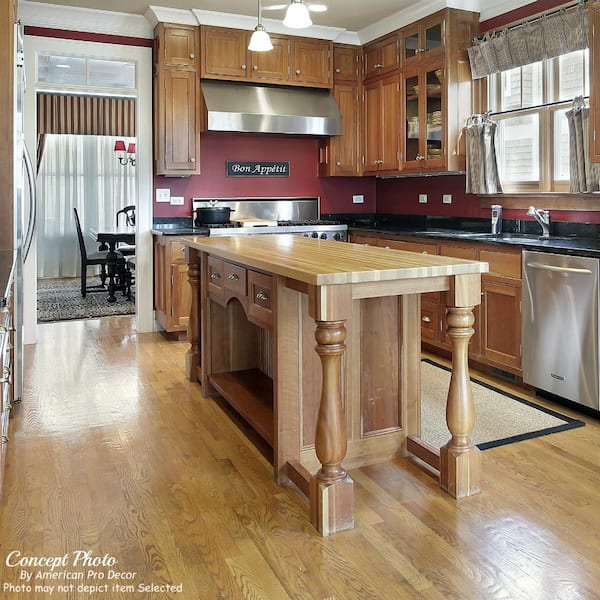Make Your Kitchen Island Stick Out with Custom Legs For Kitchen Island
Make Your Kitchen Island Stick Out with Custom Legs For Kitchen Island
Blog Article
A Guide to Choosing the Perfect Legs For Kitchen Island for Your Home
Picking the optimal legs for your kitchen area island is a nuanced choice that affects both the functionality and visual appeal of this main room. As you consider these aspects, it comes to be evident that the appropriate legs can transform not just the look of your kitchen area yet also its functionality for years to come.

Recognizing Kitchen Area Island Legs
When selecting legs for a cooking area island, it's necessary to understand their useful and aesthetic duties in the general layout. The legs function as a crucial assistance system, ensuring stability and toughness for the island, which frequently works as a work space, dining area, or collecting place. The option of product and building method should be robust sufficient to withstand everyday usage and possible wear.
Along with their structural responsibilities, legs contribute considerably to the island's visual charm. They can improve the kitchen area's design, whether with traditional, contemporary, or eclectic designs. The height and proportion of the legs are also vital considerations; they need to balance with the island's counter top height while guaranteeing comfortable seating for those using the space.
Moreover, the leg design can affect the total circulation of the kitchen area. Open, airy leg styles can create a feeling of agility, while solid, substantial legs may share an extra based and steady aesthetic - Legs For Kitchen Island. Understanding these visual and useful facets will certainly guide homeowners in making informed selections that enhance their kitchen's style and enhance its usability
Popular Styles and Products
The option of legs for a kitchen area island incorporates a variety of prominent designs and materials, each offering special qualities that can boost both performance and appearances. Conventional legs commonly display luxuriant details and craftsmanship, improving timeless kitchen designs.

Height and Stability Considerations

The legs of the cooking area island ought to provide sufficient assistance, guaranteeing that the framework can withstand everyday usage without wobbling or moving. Material option plays a significant function in security; steel legs, for instance, have a tendency to supply higher stamina contrasted to wood.
Matching Your Kitchen Area Visual
Picking the right legs for your kitchen island goes past performance; it additionally plays a considerable role in the general visual of the space (Legs For Kitchen Island). When choosing legs, take into consideration the layout style of your kitchen.
Legs that match or contrast with your great post to read island's surface area and bordering cabinets can produce visual harmony or striking focal points. Furthermore, take into consideration the surface of the legs; matte, glossy, or textured coatings can significantly affect the general feel of the kitchen area.
Setup and Maintenance Tips
Setting up kitchen area island legs needs mindful focus to information to ensure both stability and aesthetic charm. Begin by picking a suitable place for your island, guaranteeing it is degree and has sufficient area for motion. Utilize a stud finder to locate wall studs if you are connecting the legs to a wall or utilizing braces for included assistance. Mark the positioning of the legs accurately prior to drilling.
When safeguarding the legs, utilize premium screws and, if necessary, timber glue for additional toughness. For metal legs, guarantee that you are making use of suitable supports and tools to stop damage to your floor covering. It is a good idea to look for levelness after installment, making modifications as required to prevent tottering.
Tidy the legs with an ideal cleaner, staying clear of unpleasant products that might scrape the surface. By following these setup and maintenance tips, you can ensure that your kitchen island legs continue to be both useful and aesthetically attractive.
Verdict
In final thought, choosing the suitable legs for a kitchen island necessitates mindful factor to consider of height, stability, and visual compatibility. Inevitably, thoughtful leg choice plays an essential duty in raising both the practicality and design of the cooking area space.
When picking legs for a kitchen area island, it's vital to understand their aesthetic and useful roles in the total style. Open, ventilated leg styles can produce a feeling of lightness, while strong, considerable legs might communicate an extra grounded and see this here steady visual. The legs of the cooking area island must offer sufficient support, guaranteeing that the structure can withstand everyday use without changing or tottering.Installing cooking area island legs needs mindful interest to information to guarantee both security and aesthetic charm.In final thought, selecting the appropriate legs for a kitchen area island demands careful consideration of height, security, and visual compatibility.
Report this page